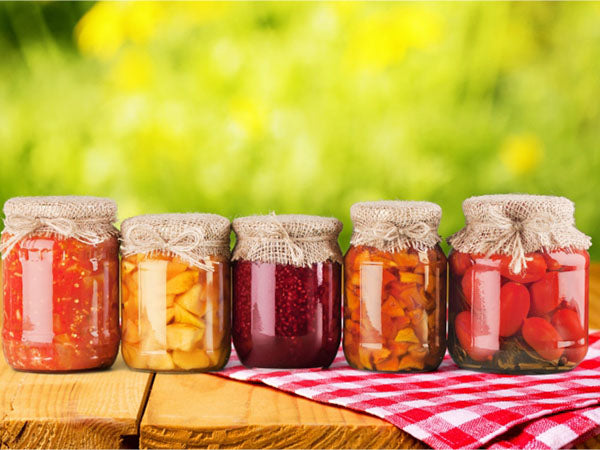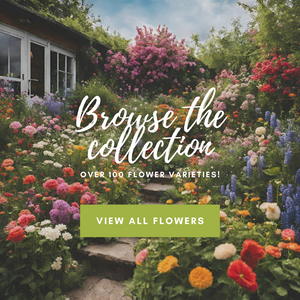
Preserving your Garden Harvest
Gardening continues to increase in popularity as food prices rise and individuals desire high quality produce at a more affordable cost. Although it does require time and work, gardening has become a very rewarding and enjoyable task for many people. With this surge of home gardeners, preservation methods are being recognized again. Home preservation methods such as freezing, canning, and dehydrating were once extremely popular but busy schedules and convenience factors have made these tasks feel daunting and less desirable. However, many are coming to realize that the money that is saved and the high-quality foods produced from home preservation are often worth the extra time and work. The ability to be self-sufficient has also sparked an interest in these processes. Below we discuss a few popular methods to preserve and highlight some of our favorite seed varieties with good storage qualities.
Freezing
Freezing is perhaps the most popular method of preservation, as it is relatively quick, results in a high level of freshness, and preserves the original color of produce. The lack of available freezer space is the biggest drawback for many people. If you are considering doing a lot of freezing, it may be worth investing in a separate standalone chest freezer or upright freezer. Traditional freezing involves blanching the vegetables and then cooling them quickly in ice water. Water is then drained, and vegetables dried thoroughly before being packaged for freezing. Some people choose to use freezer bags while others opt to use containers due to the ability to stack better. The traditional blanching method is tried and true, however can be very time consuming. For a quicker method of freezing, vegetables can be frozen without being blanched. This method is more common for short term storage. For unblanched freezing, pick vegetables when they are young and tender. Produce should be washed, cut, and then packed in freezer bags. Peppers and beans freeze very well - Blue Lake, Burpee Stringless, and Cherokee Yellow Wax are some of the most popular varieties of beans for freezing. Red Cherry tomato, Black Beauty squash, Nantes carrot, and Golden California Wonder pepper are some of our favorites for freezing!
Canning
Canning can be a more time-consuming option in comparison to some other methods. Water-bath canning refers to the process of immersing jars with food into hot water and bringing it to a boil to seal the jars. For water-bath canning, you will need a water-bath canner, jar lifter or tongs, canning jars, lids and rings. Prior to starting canning, jars should be cleaned well and then warmed in hot water to help speed up the heating process. Jar lids and bands should also be placed in warm water to help soften the seals of the lids. The produce is washed, prepared, and then packed into jars. Jars are then filled with hot syrup or juice, being careful to keep enough space for proper sealing. Jar rims are then wiped, and lids placed on the jars. Jars are then placed in the canner for the sealing process. Upon removing the jars from the canner, you will need to let the jars cool. After this cooling period, the rings are unscrewed, and jars should be wiped clean and checked for proper sealing before being put away for storage. Canned goods are best stored in a cool, dry area. Nantes carrot, Aunt Molly’s ground cherry, Verde Tomatillo, Amish Paste tomato, ROMA VF tomato, and San Marzano tomato are some of the best for canning!
Drying
Dehydrating is favored by those looking for easy storage and long shelf life. For people that have limited space to store frozen or canned goods, drying is a great option. The drying method of preservation will require you to have a dehydrator or oven to best regulate temperature and time. Sun drying is an option that is best suited for hot and dry climates. Like freezing, if you are considering doing a lot of drying it is well worth an investment in the equipment. As with the above preserving methods, there are many different approaches to drying. The basic technique of drying is when prepared foods are spread on even, single layers and then dried according to the recommended times. Dried foods are packed in airtight containers such as bottles or bags and are best stored in cool, dark areas. Although a lengthy process, dehydrating food is a time efficient method as much of the process is spent hands-off while the food is in the oven or dehydrator. If choosing to do sun dried vegetables, any cherry tomatoes have excellent sweetness. Peppers and herbs are also great choices to dry!
There are many different approaches to preserving food and varying techniques that can all be effective. This blog is only a basic overview of freezing, canning, and drying. If looking for more detailed explanations or varying process techniques, there are great resources available online and on paper. One resource available in our retail store is the book The Beginners Guide to Preserving Food at Home. Check out our new addition of Kilner canning supplies available in-store. If you are interested in learning more about different types of preserving methods, please reach out to us on social media, or send us an email at info@rohrerseeds.com!




Leave a comment